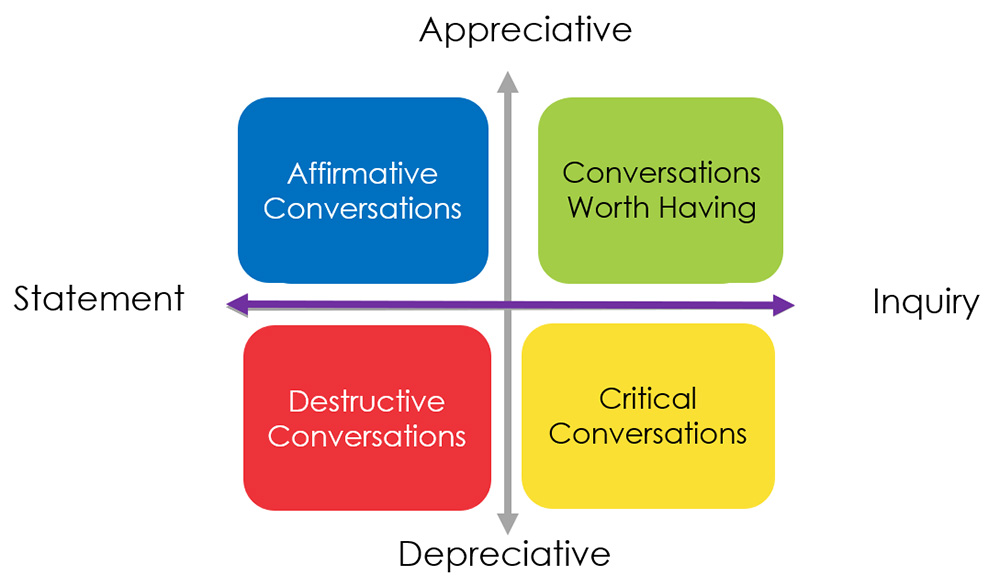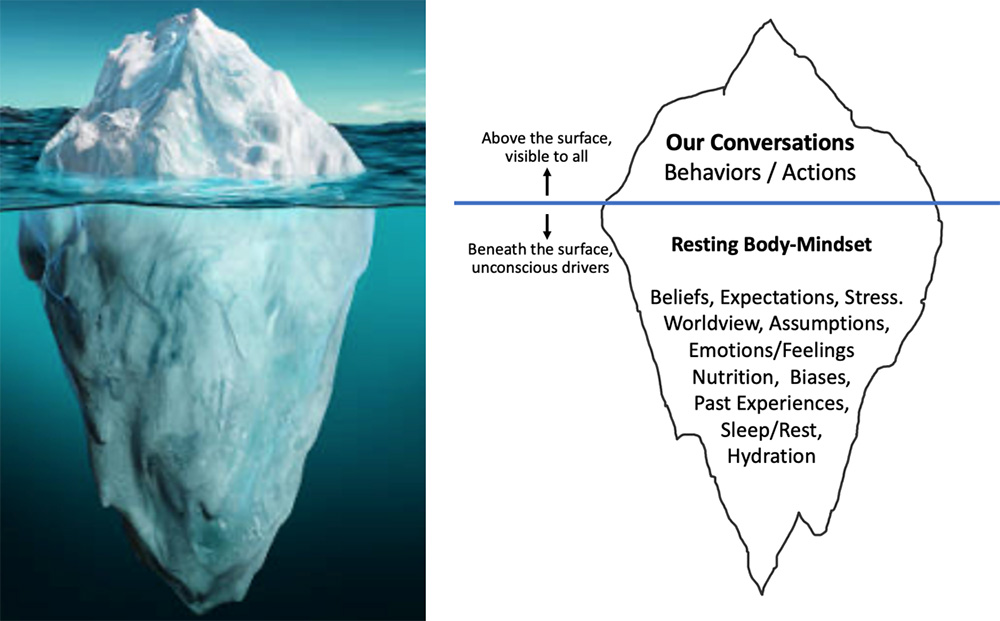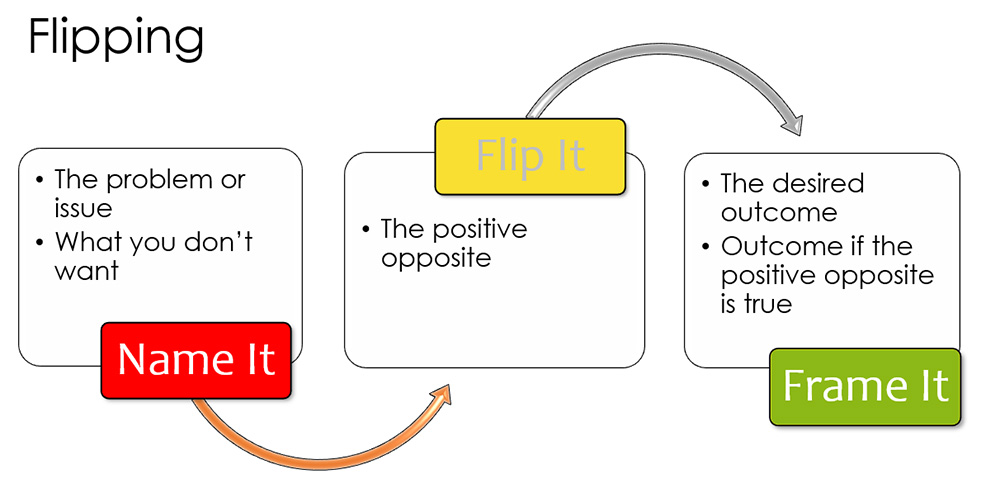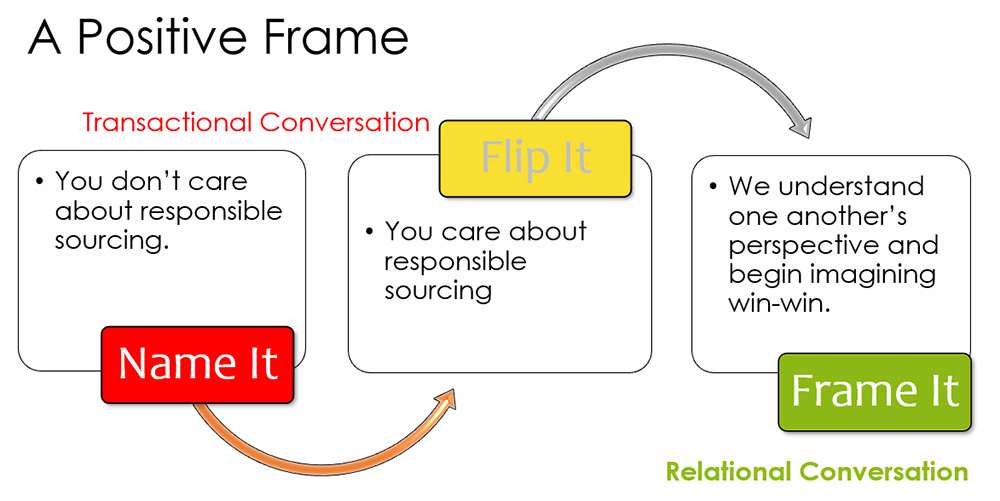
Living Room Session: Conversations Worth Having
Feb 08, 2022Conversations worth having about responsible sourcing
During this workshop style Living Room, we explored a challenge we all share, the often difficult and sometimes tense conversations we have with suppliers of gold, gemstones, and diamonds.
Most suppliers being asked don't even have the answers for a variety of reasons, and so the dialogue is often uncomfortable, evasive, and confusing and is cited by jewelers as a common obstacle to reaching sourcing goals.
We delved into how to apply the practice of developing and asking generative questions using a method co-developed by our guest, Cheri Torres, to have more meaningful communications. Our goal was to make it easier for you to be able to bring more courage and new skills to the art of question asking specifically around supply chain and sourcing topics, as well as in your everyday life!
Usually, we're not conscious that we are in nonstop conversation with others and with ourselves. It's a little like the water in which fish swim. It's omnipresent. Conversation helps us carry on our daily life, but we're not always mindful about it. If fish are surrounded by toxic water, they don't thrive; similarly, if our conversations are toxic in any way, we don't thrive and we can't live the lives we're really hoping for and wanting to live.
The conversations worth having matrix
What kind of conversations am I having? Am I having conversations that move me and others in a direction towards understanding?
We can determine that conversations really take place around two axes.

We have conversations that fall within one of these four areas. Above the mid-horizontal line, our conversations are appreciative, i.e., they add value or value people and situations. Below the line, our conversations are depreciative, i.e., they devalue people and situations. A destructive conversation is statement-based and depreciative; for example, someone says to you, “customers don't care about sustainability.”. It doesn't add value, it stops forward motion, and sometimes it's harmful to individuals or groups of people.
A Critical Conversation is one that is depreciative and inquiry-based: . “Oh, is that the new trend now?” Or “why do you keep coming here? I don't buy anything from you.” There's a question but behind the question is a judgment or an agenda.So it's not really a genuine question. We call these conversations: conversations below the line.
Above the line are two different kinds of conversations. Affirmative conversations are statement-based and appreciative. Examples include paying a compliment or acknowledging somebody, “you clearly put a lot of work into this, thanks for giving me these resources.” Advocating for something: “I think there are ways to be sustainable and profitable.” Without inquiry, however, you don't end up moving the conversation forward or inviting another person in. Asking questions makes your conversations more relational and invitational, for example, “What would have to change for us to be accountable.” These are where conversations worth having reside. These are conversations above the line conversations.
“One question that conscious leaders ask themselves over and over is “where am I?” with respect to that horizontal line. At any moment, all leaders and all people are either above the line or below the line. Our location describes how we're being with what is occurring in our life right now. If we're above the line, we are open, curious and committed to learning. If we are below the line, we're closed, defensive, and committed to being right.
Typically, when people are below the line, they believe certain things about the world, for example, they believe “there is not enough”. It could be that “there's not enough money”, or “time”, or “space” or “energy” or “love.” People below the line also believe that their story about the situation is right. People below the line also believe that there is a threat out there. Something or someone is threatening their desire for approval, control, or security. And people below the line see the situation as serious and the deeper below the line you go, the more serious the threat.
People below the line tend to behave in certain ways as well. They tend to claim an opinion, find fault and blame, gossip, explain, rationalize and justify, get overwhelmed and avoid conflict or pursue conflict for the sake of winning.
When people are above the line, they believe that learning and growing are more important than being right. They believe that all people and circumstances are their allies here for their growth. They believe that from a distance, almost everything is funny. People above the line are living with curiosity, listening deeply, speaking and questioning all their beliefs, and live a life of play.”
So, when you anticipate talking with suppliers about sustainability, and are asking them for sustainable gems or supplies for your business, ask yourself: “Where am I?”, “What images come to mind? What kind of conversation is likely to occur? And how does it feel in my body as I anticipate these conversations?” Whatever you're anticipating, the brain actually puts you in a state as if that's the reality.
The idea is, if we can become conscious of our unconscious drivers, we can be intentional in our conversations.

3 steps to create conversations worth having, above the line
Pause - The first step is to pause. Pausing interrupts your pattern of anticipating. So, as soon as you become aware, “ah, I'm anticipating something negative”, or I’m below the line, pause. That interrupts the flow of negative stress hormones.
Breathe - The second thing is to breathe. When you take a deep breath, it's a further interruption. Taking deep breaths actually stimulates the parasympathetic nervous system, which counters the stress response. As you breathe deeply, your stress response declines and the happiness hormones are primed, like endorphins or oxytocin.
Get curious - The third step is to get curious. Curiosity is a positive emotion. When you are in a place of a positive emotion, you have access to the prefrontal lobe, to the executive functions in the brain. You can get curious with questions like these: “What assumptions am I making?” “I wonder what comments or questions will send suppliers below the line? How can I not do that? How might I inspire them to be more concerned and care?” “How might I be a key influencer?” “If I can't get the product I'm looking for, can I be a change agent for sustainability and responsible sourcing?”
It’s about shifting your perspective.
The practices that you can use to change your conversations
Generative questions
When we get in that place of curiosity and breathe deeply, our field of vision widens allowing us to take in more of the world and of the people around us. When we ask generative questions, it changes the way we think and it changes the way other people think, stimulating compelling images that we can lean into.
Widening our screen means widening our view around engaging with suppliers and addressing assumptions. Asking questions like: “What am I assuming?” Or, “what's your viewpoint on this?” creates shared understanding. “What would you like to have happen?” “What might make this possible for you?” The idea is to begin generating new knowledge by asking questions as you engage. Asking questions like: “I wonder how that other buyer / supplier is able to find these? Why don't we find out?” Or inspiring possibilities: “What could we do? What might we do? What if …?”
These kinds of questions widen the screen and create connections between people. Generative questions can shift the conversation and put it above the line in a heartbeat.

"Two Simple AI Practices" - In this title 'AI' stands for Appreciative Inquiry. Link to learn more about Appreciative Inquiry. https://www.davidcooperrider.com/ai-process/
Positive framing
The second practice is positive framing. And that is simply talking about what you want, instead of what you don't want.
So, “what do we want for our relationship, for my business, for your business, for the sector or for the industry?” If you can't get a particular product from a particular supplier, it doesn't necessarily mean that's where the conversation has to stop. You might end up deciding “okay, the supplier doesn't have what I'm looking for, so maybe I can be a change agent here.” What positive frame could I bring to the conversation that might eventually bring this supplier around so that the next time I'm in Tucson (or elsewhere), this supplier actually has what I'm looking for?
To begin, imagine a different conversation, “What is the conversation that I want to have?” “What if I get into a conversation and the supplier doesn't have what I want or isn't interested in what I want, but by the end of the conversation, I understand more about the supplier and the supplier understands more about me?” Maybe this can elicit a little bit of a shift and an interest from the supplier to learn more.
What images come to mind when you imagine talking with suppliers about sustainability? And where are you? Are you above the line or below the line? Imagine flipping the frame of the conversation so you can be above the line. The tool to do this, featured in the book, is called flipping. If you’re anticipating a negative interaction, flip it. What kind of conversations do you want to be in? Then you can foster a conversation worth having.
Flipping
Flipping is simply, first, naming the problem. “What is the negative I’m anticipating?” What's the issue?” And then flip it to its positive opposite.

And don't stop there. From the positive, ask yourself: “if the positive were true, then what would be the outcome?” Or simply, “what's my desired outcome from this conversation?”
For example, “My suppliers don't care about responsible sourcing or sustainability.” The first thing to do here is to check in with yourself: “I'm anticipating a negative conversation. Let me flip that: My suppliers care about responsible sourcing and sustainability.” And these conversations might feel very transactional, but instead, move it a little bit further. “What conversation do I really want to be in, especially if my supplier doesn't seem to care about responsible sourcing?” Maybe I might come with a positive frame of hoping to start to understand one another's perspectives, and maybe begin imagining a win-win that is much more of a relational conversation.

Now we can be in conversation with suppliers, forming a relationship that may actually influence future actions. When you have a positive frame, then you ask generative questions that focus on that frame. Imagine, you decide your positive frame is going to be “we understand one another's perspective.” Then you might ask, “What is your perspective on sustainable sourcing? What have you tried? What challenges do you face? May I share my perspective with you?
And now you are in a conversation worth having.
During the session we workshopped several challenges and generated questions that would lead to positive conversations. Let us know how it goes putting them in practice!
All images Courtesy Cheri Torres, Conversations Worth Having ©
Join Our Community
Stay up-to-date with our latest content, industry news, and more.
Check your Inbox/Junk folder to confirm you want to receive emails from us. Don't worry, your information will not be shared.

